Much has been written about how Australia’s labour market and economy are being underpinned by record government spending, which hit 27.3% of GDP in Q2 2024 and is projected to continue rising.

The National Disability Insurance Scheme (NDIS) has become the biggest driver of Australia’s employment growth.
As illustrated in the following chart from CBA, NDIS-related roles have experienced explosive growth over the past two years:
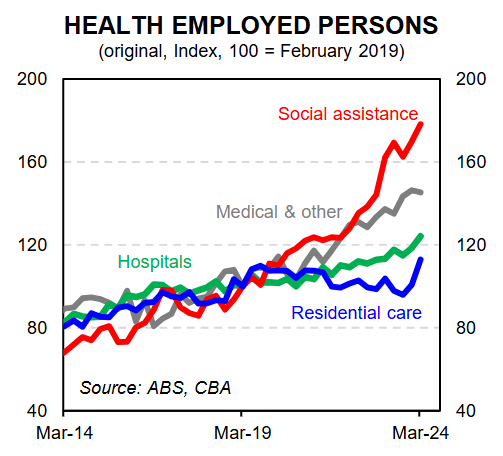
The rapid growth in the caring economy is a key reason why Australia’s labour market has held up better than the other Anglo nations:

Meanwhile, Australia’s market economy is struggling. Nothing sums up the situation better than the following chart from Alex Joiner, chief economist at IFM Investors:
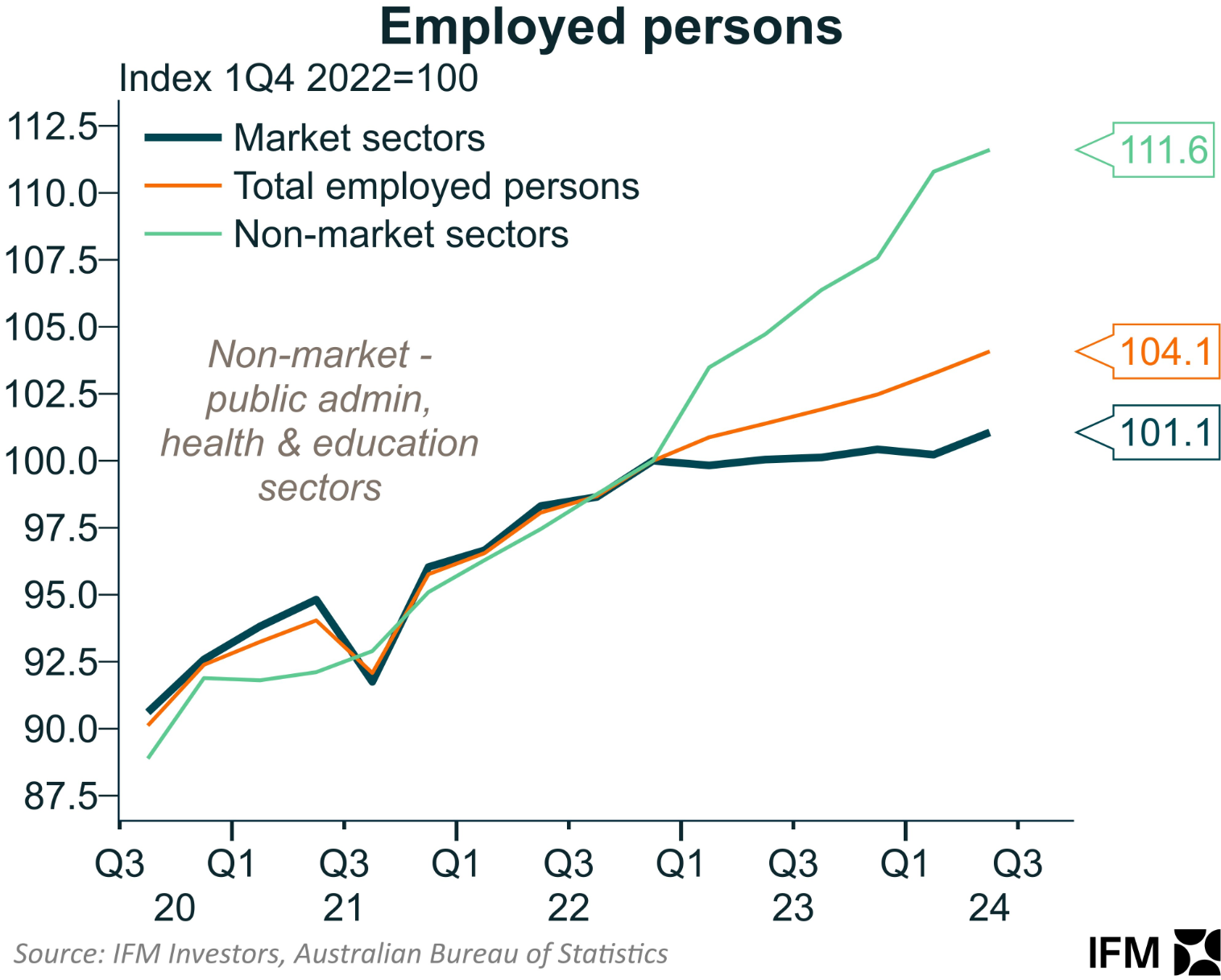
Since Q1 2022, just before the Albanese government came to office, overall employment across the Australian economy has grown by 4.1%.
However, nearly all of this employment growth has come from the non-market (government-aligned) sector, where the number of jobs has expanded by an extraordinary 11.6%.
In comparison, jobs growth across Australia’s market sector has stagnated, growing by only 1.1% over the same time period.
It is a similar story with respect to aggregate hours worked, where all of the 1.5% growth in hours worked in the year to September came from the non-market sector:

The above employment data comes in the context of the strongest rate of population growth since the early 1950s:
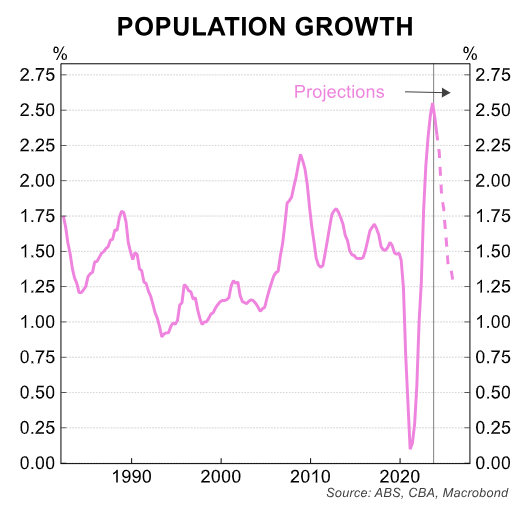
Therefore, market sector employment has shrunk significantly as a share of the economy.
Given that the annual cost of the NDIS is expected to more than double over the coming decade, it is likely than the non-market sector will continue to expand as a share of the economy.
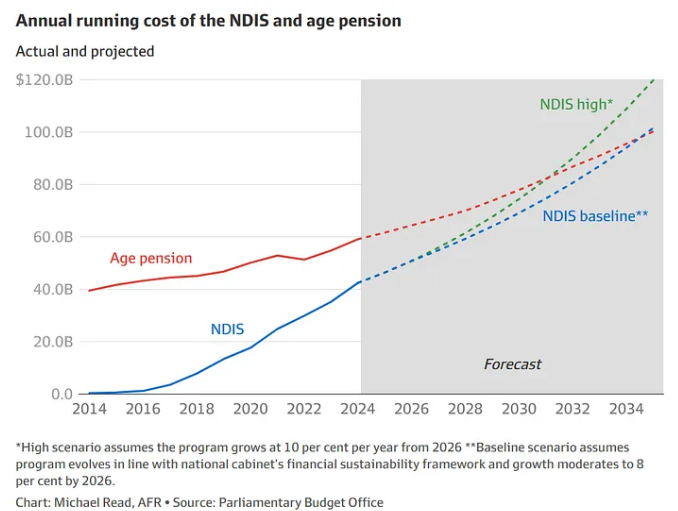
This has negative implications for both the federal budget and the nation’s productivity, given that the non-market sector has traditionally experienced far lower productivity growth than the market sector:
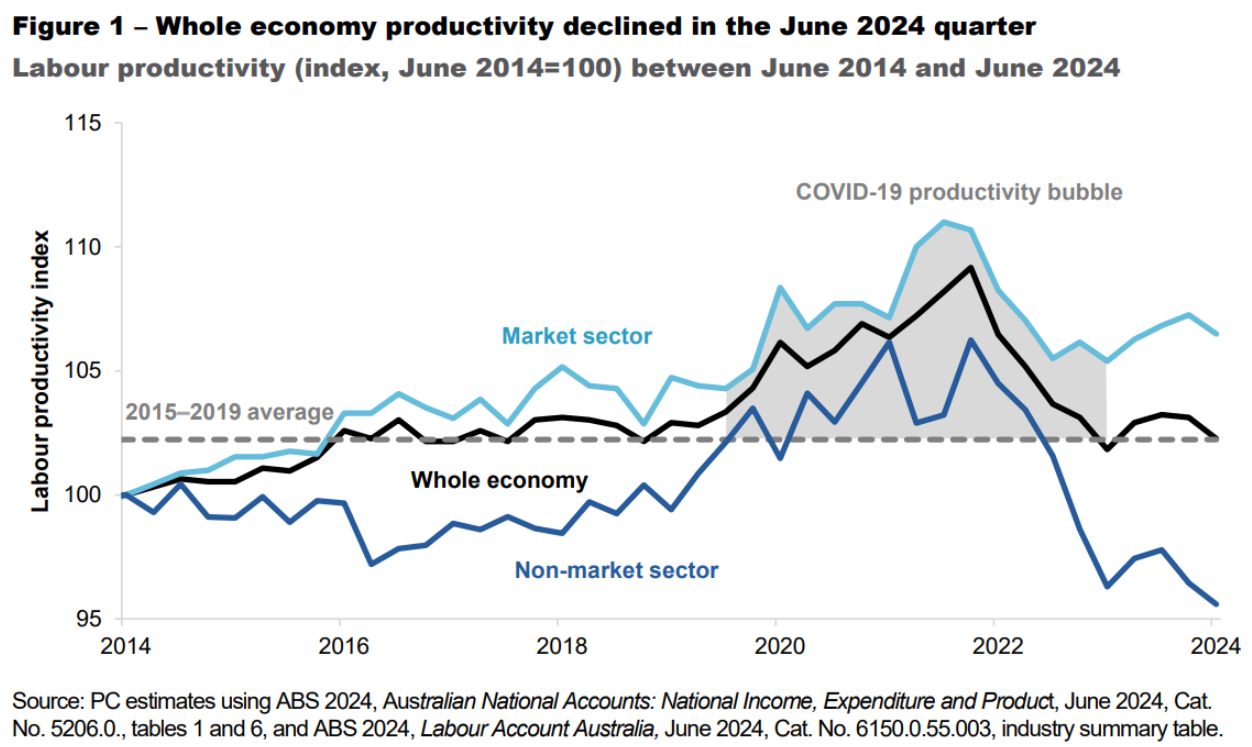
At some point, the question will need to be asked: are the Australian economy and budget sustainable?

